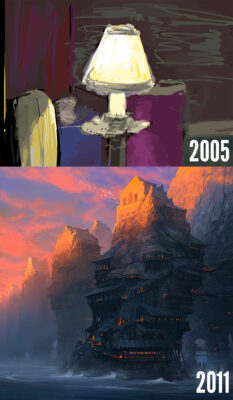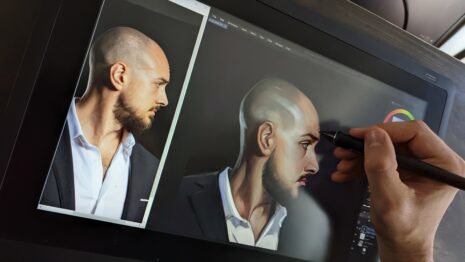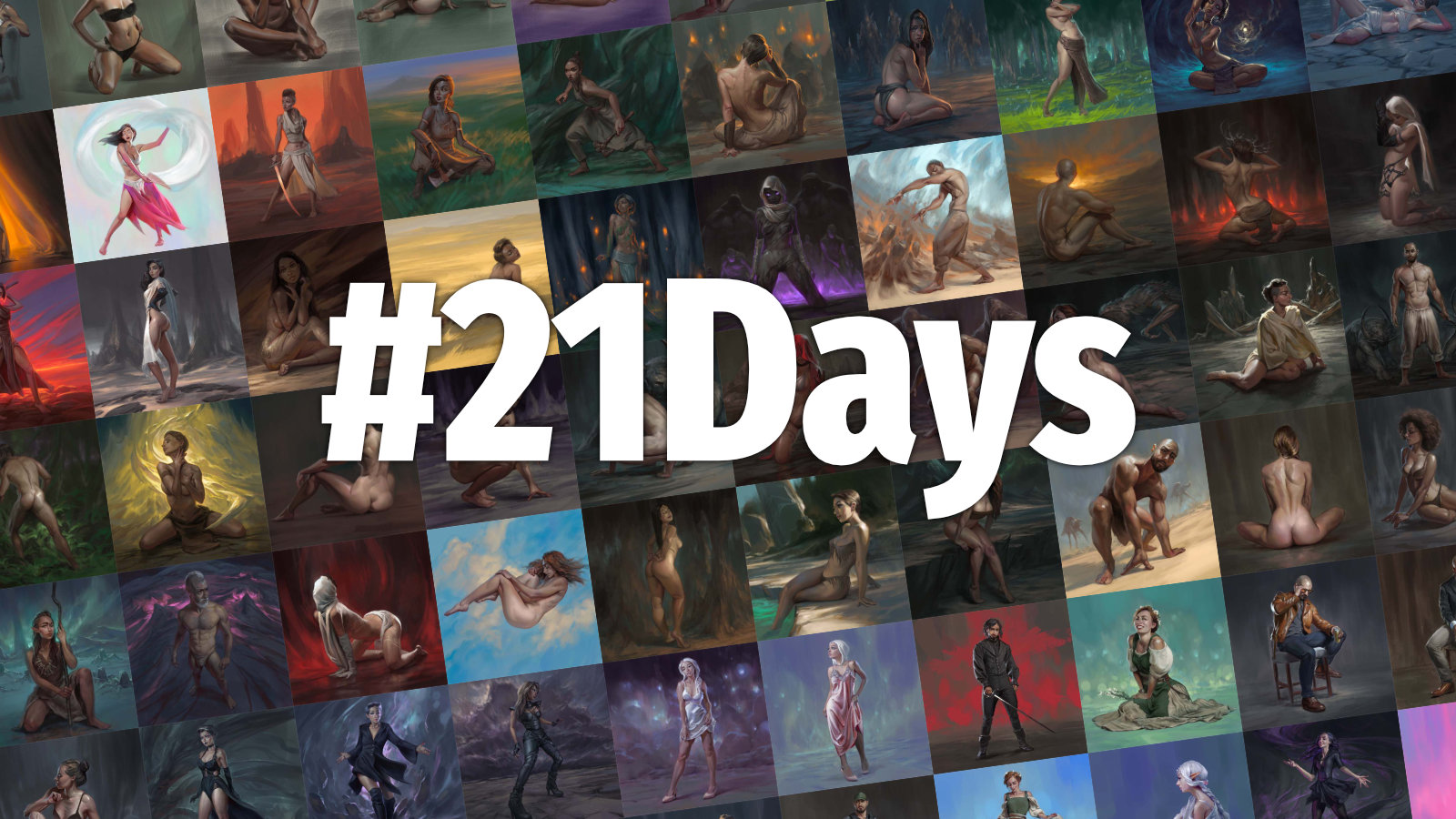
A simple 21 day program to become a better artist, even if you’re terrible at drawing.
Art is a skill. If you can learn to read and write, you can probably learn to draw and paint. And if you’re already a decent, you can be a better artist.
I’m going to show you how I’ve done it and continue to do it. All it takes is 21 days. You probably have some paper & pencils/pens around you, so you have the required materials already.
Practicing is really, really hard to find time to do.
Have you ever wanted to practice but just never found the time to do it? You mean well and sometimes you want to, but there’s always something getting in the way.
That’s because we’re not making practice a habit. We’re making it an effort.
If I have to decide to practice, it usually means that I don’t do it at all. Instead, I need to find ways to trick myself into studying.
So today we’re going to smoosh Tim Ferriss’s DiSSS method, a healthy dose of The Power of Habit, and add a smattering of Atomic Habits to give you a path to being a better artist.
You’re going to practice for one hour a day for the next 21 days.

You’re going to practice art.
No, really, you’re going to practice.
But (of course) there’s more to it. First of all, you’re going to do it for an hour a day for 21 days straight. Every day. No weekends. No days off. No sick days. No cheat days. Nope. Also no sorta-kinda-practicing. This hour is for art and art only. This is not an hour for you to doodle on a piece of paper and call it practicing. Because that’s not practicing.
If you try to do this, you’re going to fail. You’d probably make it a few days if you’re disciplined. A week if you’re nuts. But if you want to do it the whole three weeks, you’re going to need to trick yourself.
Make practicing to become a better artist a habit.
Habits are stupid and awesome. They’re obnoxious because we tend to have a lot of bad ones and they’re awesome because we don’t have to motivate ourselves to brush our teeth every day.
Charles Duhigg’s The Power of Habit states that habits are incredibly simple to understand. There are just three steps: Cue, Routine, Reward.
So let’s fill in the blanks. Obviously, our Routine will be practicing art (we’ll cover how to practice in a bit). One down.
Our Cue really depends on… you. It could be when you first wake up in the morning. When you have your first cup of coffee for the day. When you listen to a certain album. It could be when the kids go to bed. When you finished cleaning up after dinner. When you first sit down at your desk.
Let’s say it’s that last one. You’re going to sit down at your desk every day and your materials will be waiting for you. Your paper will be clean, your pencil will be sharpened, your reference will be prepared. You’ve set up your Cue to practice.
Last up: Reward! This is a fun one. Find a way to kick your dopamine into gear and have some happy fun times. I personally get a kick out of sharing what I’ve just made, even if it’s just a quick study. It’s probably for the same reason that when we were kids we all showed our mom what we had just drawn. The internet is the new fridge to put your art on.
For a while I was doing studies when I first got hungry in the morning. Breakfast was my Reward, hunger was my Cue.
This is how you practice if you want to be a better artist.
Let me deconstruct art for you. Taking the 80/20 rule to art, the most important thing you can learn is the ability to look at something and recreate it on paper. Drawing. That’s the first and foremost skill you should learn in art. It can take years upon years to master (and you’ll never really stop improving at it), but you can pick up the basics pretty quickly. Here’s a video that teaches you a lot of those fundamentals of drawing.
(Note: this and the next video are done entirely in Photoshop. But these lessons don’t require expensive tools or being familiar with fancy, overpriced software. These exact same exercises can be done on paper with a pencil. And it’s probably better to do it that way, besides.)
Seems pretty simple, right? Look at something, draw some guidelines, measure some shapes, compare one shape/angle/line to another? Draw, check yourself, correct the mistake, and check again! Ta-da, you’re an artist! If you spend the next 21 days working on just that, I promise you that you will be a better artist. Leonardo you may not be, but you’ll at least be able to draw stuff more competently.
Looking for stuff to draw? Our free sample reference packs are a great place to start. There’s a ton of variety of high quality reference that you can work and learn from. They’re also a fair bit more exciting to draw than a bowl of apples.
If you’re more of a book person and have never drawn before in your life, Drawing on the Right Side of the Brain has some great exercises. The science is, of course, utter nonsense. But the exercises are handy and a good starting point for those without any experience.
Great artists steal from great artists.
We call them “master studies” and they’re basically where you take a drawing or painting by another artist and do your best to recreate it (kinda like you were doing above). Here’s a video explaining everything you could ever want to know about master studies.
Now don’t get me wrong. There are many other exercises that are great practice. But these two will get you very, very far. Whether you’re just starting or you’ve been doing art for a decade or two. I don’t think you can get to a point where you won’t find any benefit from doing these studies.
#21Days
The last step is fun and maybe a little scary. Public accountability! For many of us, we need the fear of shame and failure to encourage us to make the first steps in doing something.
So tell all of your friends that you’re doing this. Everyone online. Everyone on Twitter and Instagram (and feel free to tag us on Instagram if you’re using our reference).
And when you’ve done it? Share your accomplishment, give yourself a pat on the back, and start on your next 21 days! I find that if I can get the ball rolling towards becoming a better artist, I have a much easier time carrying on. When you see that practice really works, it’s a whole lot easier to do more of it. So keep going!
